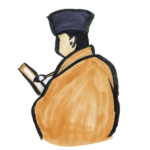Teshio ni Kakeru (手塩にかける – Raising with Tender Care)
Teshio ni Kakeru
手塩にかける
Have you experienced raising or cherishing a child, an animal, or a plant by your own hands?
子どもや動物、植物などを、自分自身の手で大切に育てたことはありますか?
There is a saying for this in Japanese: teshi ni kakeru (手塩にかける).
そのようなことを、日本語で「手塩にかける」と言います。
The te in teshio means “hand,” the shio means “salt,” and ni kakeru means “to sprinkle something.”
「手塩」の「手」は “hand,” 「塩」は “salt,” 「かける」は “to sprinkle something” を意味します。
In the past in Japan, people had their meals at zen (膳 – small dining table), and a small amount of salt to adjust the flavor of the meal was put on top of the table.
かつて日本では、各自の膳で食事をしており、膳の上には食事の塩加減を調整するための少量の塩が添えられていました。
(It is thought that originally this salt was placed there to purify the zen.)
(もともとこの塩は、膳の不浄を祓うためのものだったと考えられているようです。)
This salt was called teshio (手塩), and people adjusted the seasoning by sprinkling the salt by their own hands, so teshio ni kakeru has come to mean that you raise something carefully by yourself.
この塩のことを「手塩」と呼び、手塩で自ら料理の味を調えることから、「手塩にかける」は「自分で大切に世話をする」のような意味を持つようになったというわけです。
【Example sentences】
【例文】
・Musume wo teshio ni kakete sodateta (娘を手塩にかけて育てた – I fostered/cherished my daughter carefully.)
・娘を手塩にかけて育てた。
・Teshio ni kakete sodaterareta yasai wa oishii (手塩にかけて育てられた野菜は美味しい – Vegetables raised by hand are delicious.)
・手塩にかけて育てられた野菜は美味しい。




